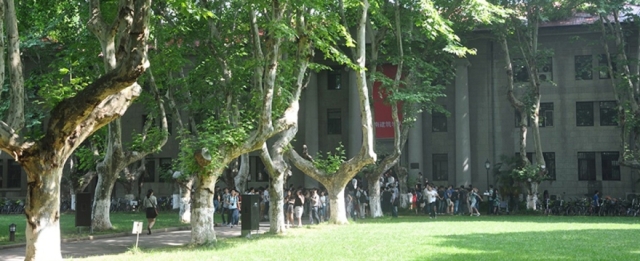
Solar Decathlon Design Challenge丨2019年东南大学建筑学院研究生建筑设计课程
2020国际太阳能十项全能建筑设计竞赛
2020 Solar Decathlon Design Challenge

国际太阳能十项全能竞赛(Solar Decathlon,简称SD)被誉为太阳能和绿色建筑行业的“奥运会”,竞赛由美国能源部发起,借助世界顶尖研发、设计团队的技术与创意,每个参赛团队需要将太阳能、节能与建筑设计以一体化的新方式紧密结合,设计、建造并运行一座功能完善、舒适、宜居、具有可持续性的太阳能住宅。竞赛期间,太阳能住宅的所有运行能量完全由太阳能设备供给。目前在全球范围内已有美国、中国、欧洲、中东、非洲、拉美六大组委会。
The International Solar Decathlon competition (SD) is known as the "Olympic Games" of solar energy and green building industry. The competition is sponsored by the U.S. Department of energy. With the technology and creativity of the world's top R & D and design teams, each team needs to closely integrate solar energy, energy conservation and architectural design in a new integrated way, design, build and operate one Solar energy residence with perfect function, comfortable, livable and sustainable. During the competition, all the operating energy of the solar house is completely supplied by the solar equipment. At present, there are six organizing committees in the world, namely, the United States, China, Europe, the Middle East, Africa and Latin America.
课程背景 BACKGROUND
东南大学建筑学院一直以来密切关注可持续建筑的发展动向,参与了多届竞赛并取得了优异的成绩,东南大学—德国布伦瑞克工业大学队获2018年SDC竞赛总分第三名。作为2018年SDC竞赛的延续,在2019年东南大学建筑学院研究生建筑设计课程中,建筑技术与科学研究所的教师们开设了“基于性能定量分析的建筑产品优化设计与建筑类型扩展研究”课程,探讨了建筑产品设计模式追求从“有”到“更好”的优化和改善,详见中大院2019-01-31的微信推送(基于性能定量分析的建筑产品优化设计与建筑类型扩展研究|东南大学建筑学院研究生建筑设计课程 )。
The school of architecture of Southeast University has always paid close attention to the development trend of sustainable architecture, participated in many competitions and achieved excellent results. The C-House of Southeast University - Braunschweig University of technology team won the third prize of SDC competition in 2018. As a continuation of the SDC competition in 2018, in the course of architectural design for graduate students of the school of architecture of Southeast University in 2019, the teachers of the Institute of building technology and science set up the course of "Research on the optimal design of building products and the expansion of building types based on the quantitative analysis of performance", and discussed the optimization and improvement of the design mode of building products from "have" to "better". For details, see WeChat push at 2019.01.31.
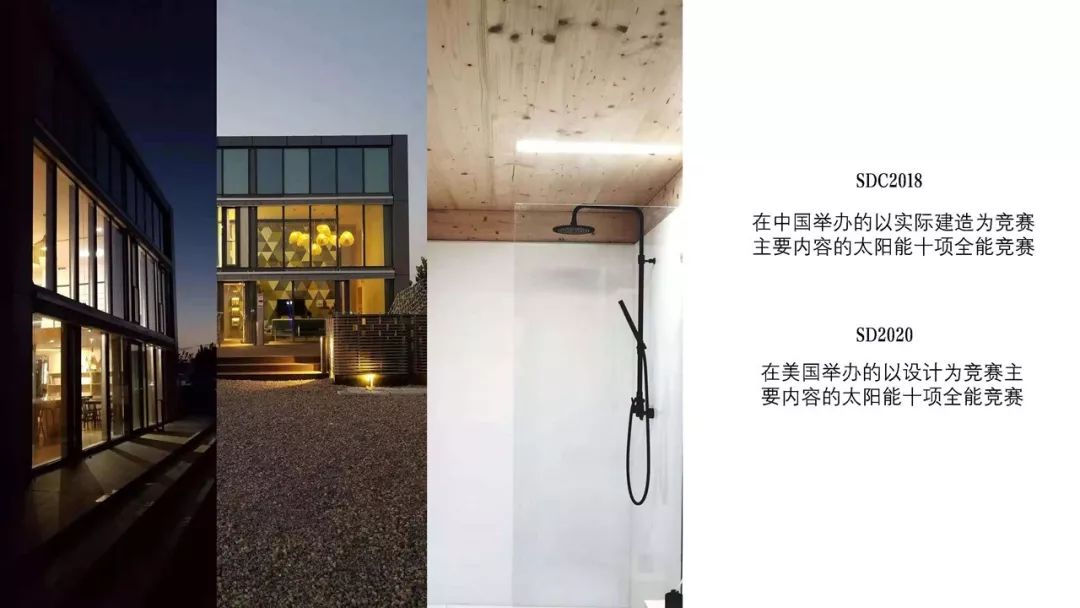
本次建筑设计课程以2020SD设计竞赛为依托,要求同学们学习性能导向的建筑设计方法。设计类竞赛作为新的竞赛方向,与建造类竞赛有所区别。本次竞赛为第二届设计类竞赛,以十项指标为主要评价标准,可选择自由选择郊区单户住宅、城市单户住宅、联排住宅、商住混合、小学、办公楼等方向开展设计。
Based on the 2020 sd design competition, this architectural design course requires students to learn performance-oriented architectural design methods. As a new competition direction, design competition is different from construction competition. This competition is the second design competition. With ten indexes as the main evaluation criteria, you can choose to design in the directions of suburban single family house, urban single family house, row house, commercial residential mixed, primary school, office building, etc.

课程特点与目标
COURSE FEATURES AND GOALS
1 基于性能的定量分析与建筑设计优化研究
1 Research on Performance-Based Quantitative Analysis and Architectural Design Optimization
传统建筑设计着眼于建筑形式、空间、功能的设计,属于艺术、人文研究的范畴。本次课程的设计研究专注于建筑性能的控制研究,性能、建造、艺术。本次课程在前一届设计课程的基础上,探索Rhino, Sketch Up等不同设计软件与各类性能模拟软件的配合。每组根据自身情况选择合适的性能模拟软件进行定量分析,与建筑设计同步优化设计方案。
Traditional architectural design focuses on the design of architectural form, space and function, belonging to the category of art and humanities research. The design research of this course focuses on the control research of architectural performance, performance, construction and art. Based on the previous design course, this course explores the cooperation between Rhino, Sketch Up and various performance simulation software. Each group selects the appropriate performance simulation software according to its own situation for quantitative analysis, and simultaneously optimizes the design scheme with the architectural design.
2 不同背景的住宅设计研究
2 Research on Housing Design With Different Backgrounds
本课程希望将建筑设计中的人文与技术相结合,探讨不同地域、文化背景下的住宅设计。针对特定的环境选取合适的故事,来拔高本次竞赛的意义。
This course hopes to combine the humanities and technology in architectural design and explore the residential design in different regions and cultural backgrounds. Select the right story for the specific environment to highlight the significance of this competition.
3 协同设计研究
3 Research on Collaborative Design
建筑设计与定量模拟计算的协同设计。要求同学们学会性能定量计算与设计优化同步开展。建筑学背景的同学要主动学习能耗模拟计算等知识,非建筑学背景的同学要学习如何进行建筑设计,每位同学要突破自身的舒适圈,主动学习新知识,达到双向学习的目的。
Collaborative design of architectural design and quantitative simulation calculation. Students are required to learn how to carry out quantitative performance calculation and design optimization simultaneously. Students with architecture background should actively learn energy consumption simulation calculation and other knowledge. Students with non architecture background should learn how to carry out architectural design. Each student should break through their own comfort zone, actively learn new knowledge, and achieve the purpose of two-way learning.
课程要求 COURSE REQUIREMENTS

课程进度安排 COURSE SCHEDULE
1 教学设计阶段
1 Teaching and Design Stage
2019.09.23 - 2019.10.28
针对十项全能指标进行解读与分析,学习相关性能模拟软件
Interpret and analyze decathlon indicators, and learn relevant performance simulation software
2019.10.28 - 2019.11.11
确定设计选题和选址,讲好主题故事
Determine the design topic and location, and tell the theme story well
2019.11.11 - 2019.11.26
团队LOGO设计,光伏板倾角计算,建筑方案设计,提交项目简介
Team logo design, photovoltaic panel inclination calculation, architectural scheme design, project introduction submission
2019.11.26 - 2019.12.30
方案推进,性能优化与建筑协同设计,准备期末答辩
Scheme promotion, performance optimization and architectural collaborative design, preparation for final defense
2019.12.30 - 2020.01.10
准备H5形式的答辩方式
Prepare the form of reply in H5

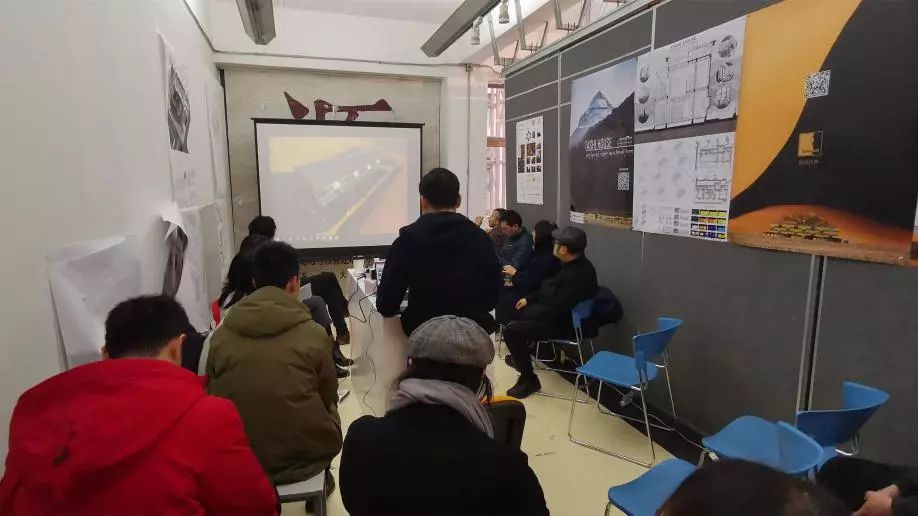

答辩现场 The Scene of Presentation




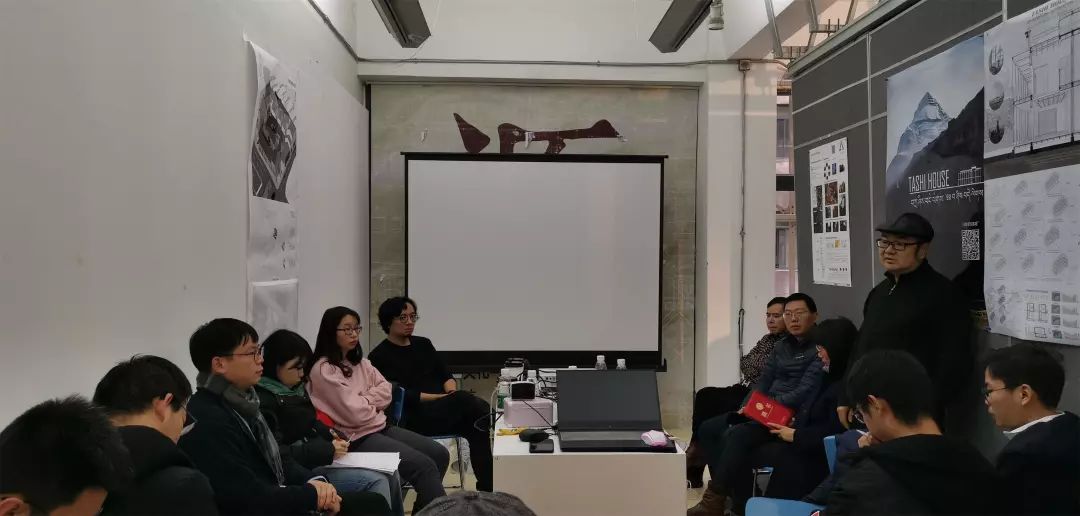
评委点评 Judges Comment
2 准备竞赛阶段
2 Prepare for the competition stage
2020.01.10 - 2020.02.18
完善实现十个指标的具体方法与软件,完成在线建筑科学培训课程
Perfect the specific methods and software to achieve the ten indicators, complete the online building science training course
2020.02.18
提交项目进度报告
Submit project progress reports
2020.03.31
提交项目报告和团队照片
Submit project reports and team photos
2020.04.14
提交项目成果,可附加海报或者视频
Submit the project results with poster or video attached
2020.04.17 - 2020.04.19
入围团队在美国科罗拉多州展示项目海报,公布获奖名单
The finalists displayed project posters and announced the winners in Colorado, USA
阶段成果 PHASED ACHIEVEMENTS
联排住宅组
Attached Housing

背景与选题
世界荒漠化

识别二维码查看详细内容 Identify QR code to see details

吐峪沟大峡谷是西部最具神秘色彩的地方,是世界多种著名宗教历史文化的交汇地。已被命名为“中国历史文化名村”的吐峪沟麻扎村,是新疆现存的最古老的维吾尔族村落,已逾1700年历史,至今还保存着维吾尔族最古老的民俗风情,有“民俗活化石”之称。村落中古老的生土建筑,至今还闪烁着“黄粘土文化”的光芒;是今天海内外穆斯林敬仰神往的圣地,是宗教历史文化艺术界学者歇足的驿站,是绘画摄影艺术家寄托梦想的家园。
Tuyugou Grand Canyon is the most mysterious place in the West and the intersection of many famous religions, history and culture in the world. Tuyugou Mazha village, which has been named as "a famous historical and cultural village in China", is the oldest Uygur village in Xinjiang. It has a history of more than 1700 years, and still has the oldest Uygur folk customs, known as "living fossil of folk customs". The ancient native buildings in the village still sparkle with the light of "yellow clay culture"; they are the holy land that Muslims at home and abroad worship today, the post station where scholars in the religious, historical, cultural and art circles rest, and the dream home of painting and photography artists.

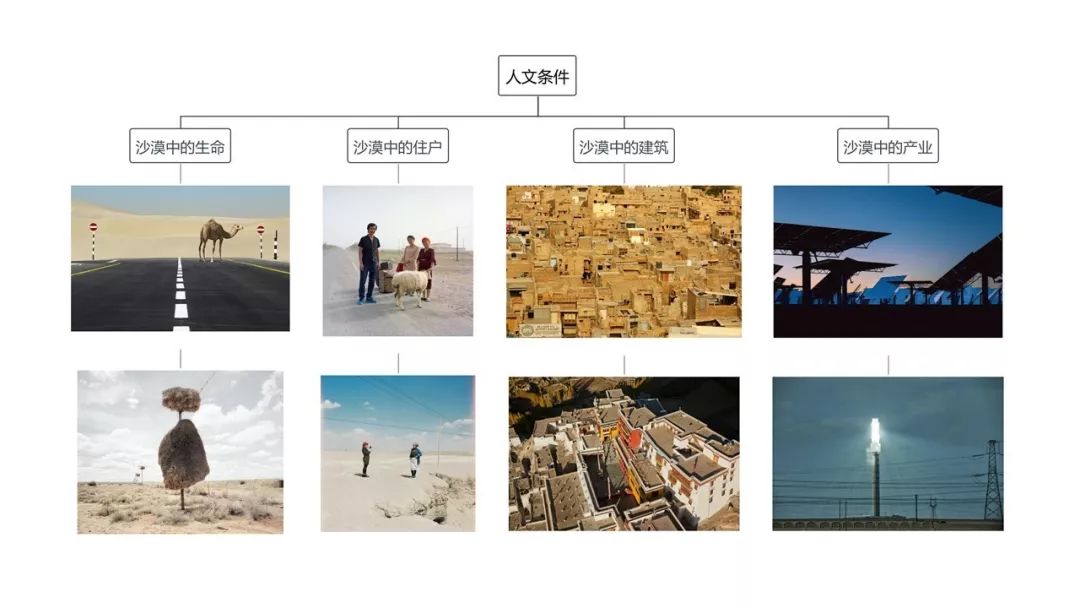
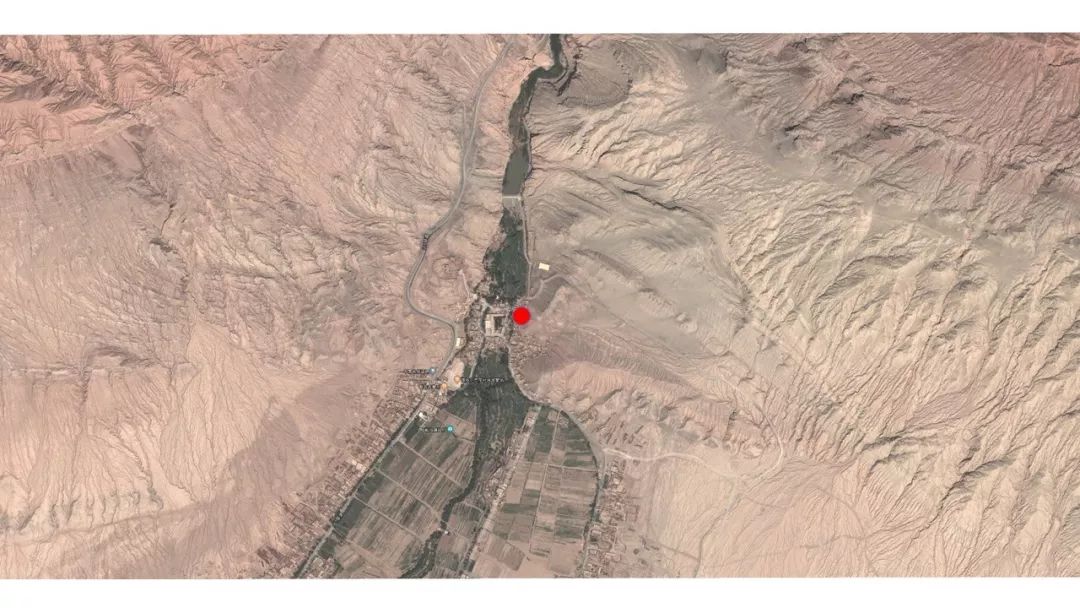
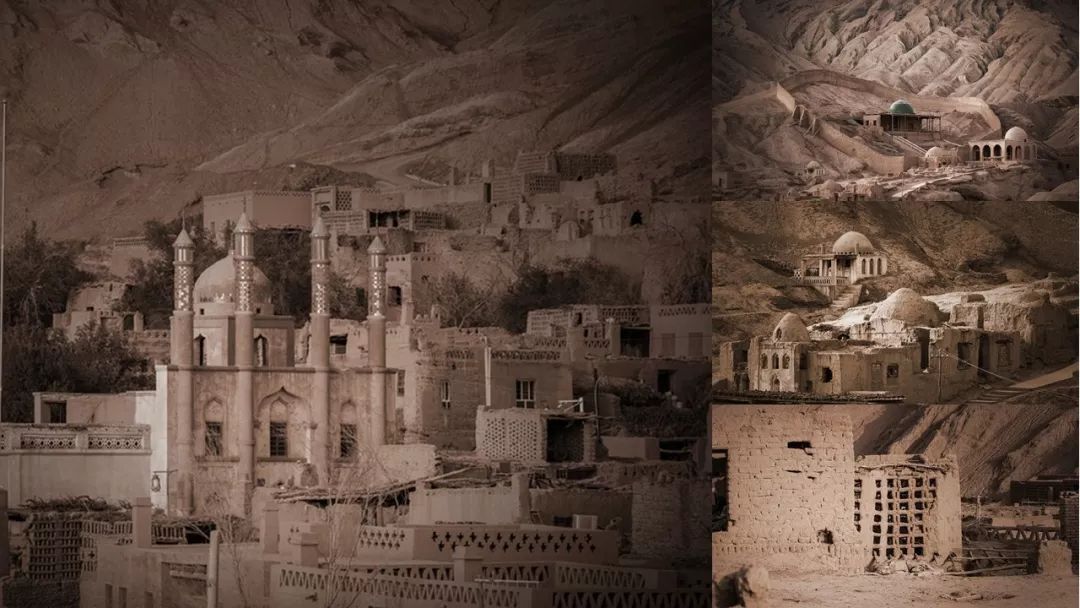
建筑设计

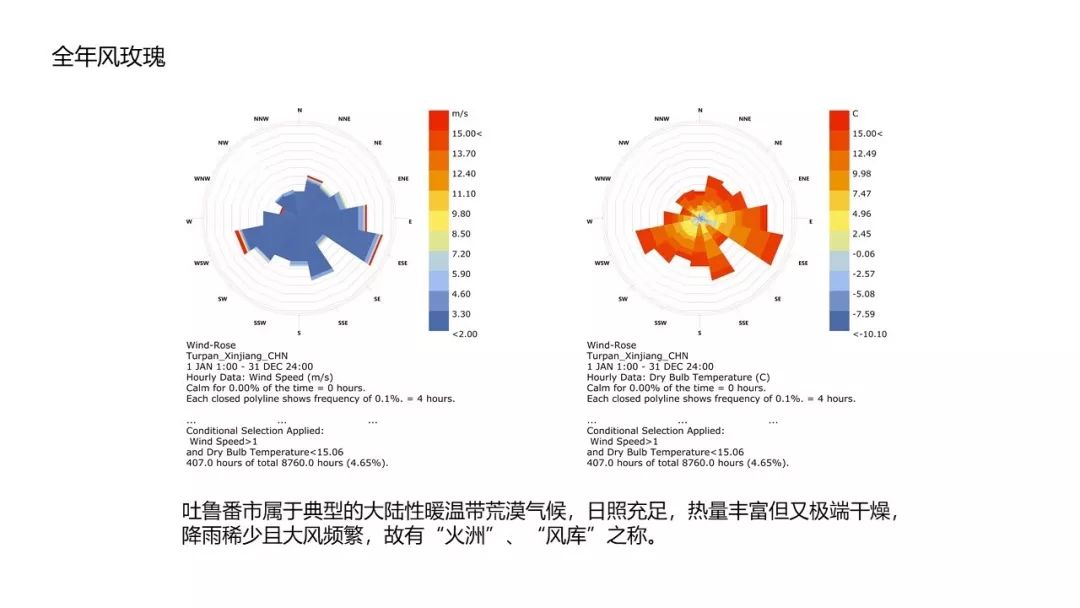
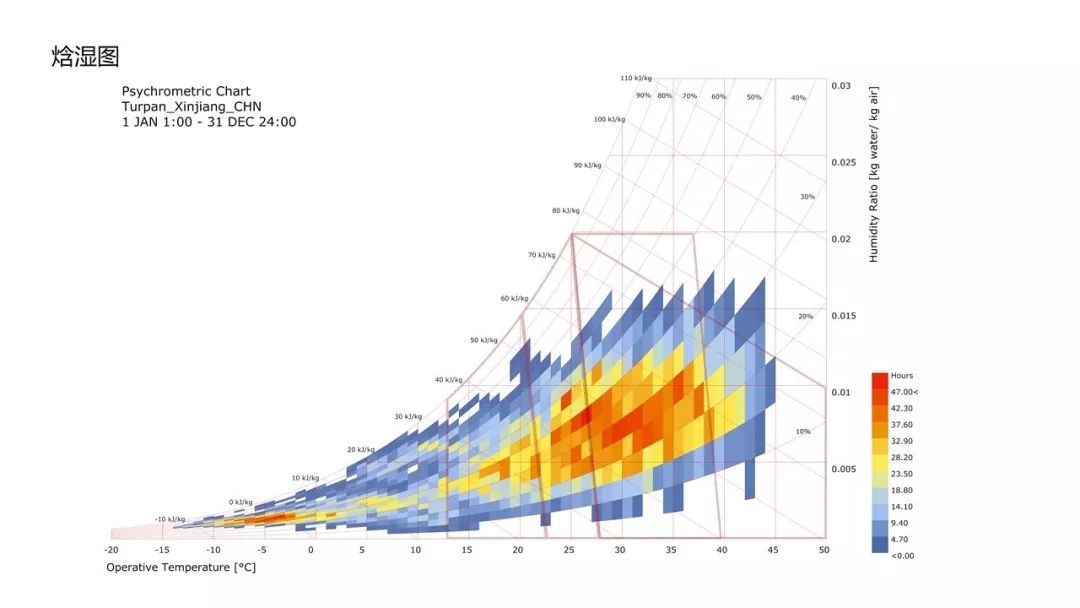


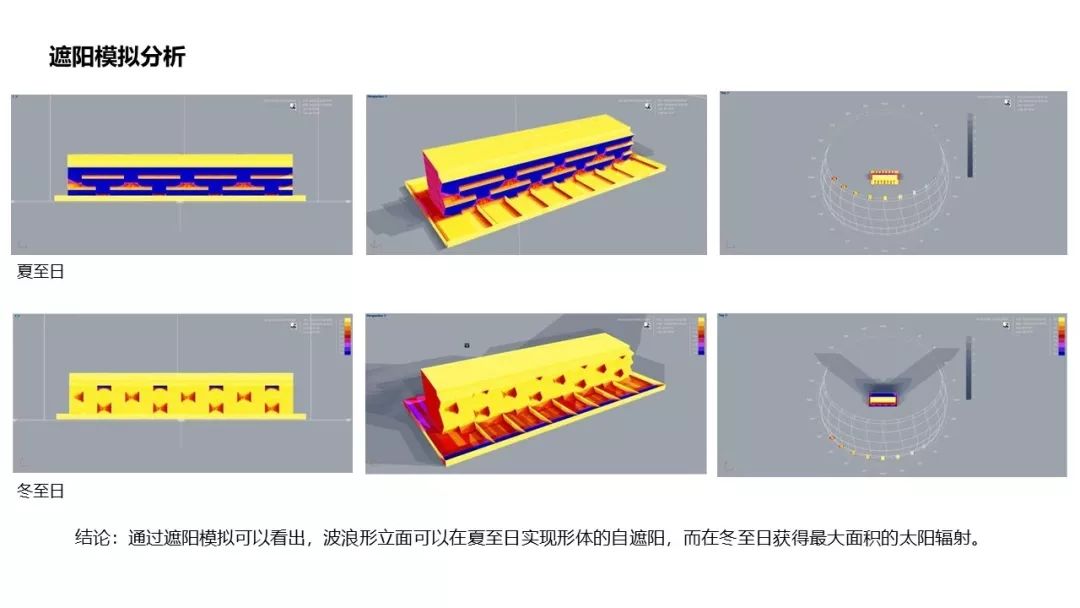
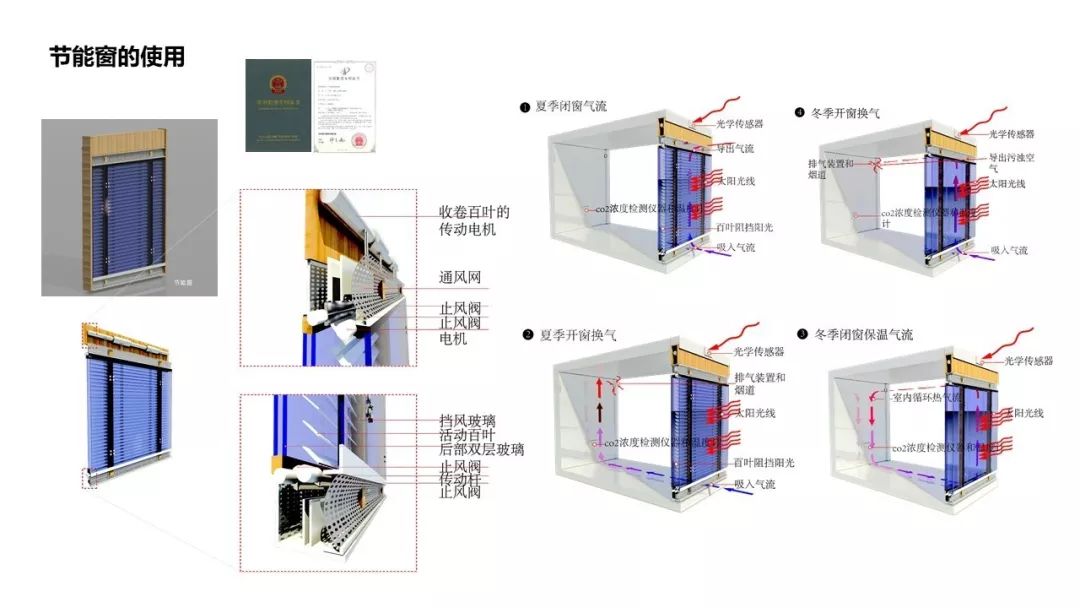
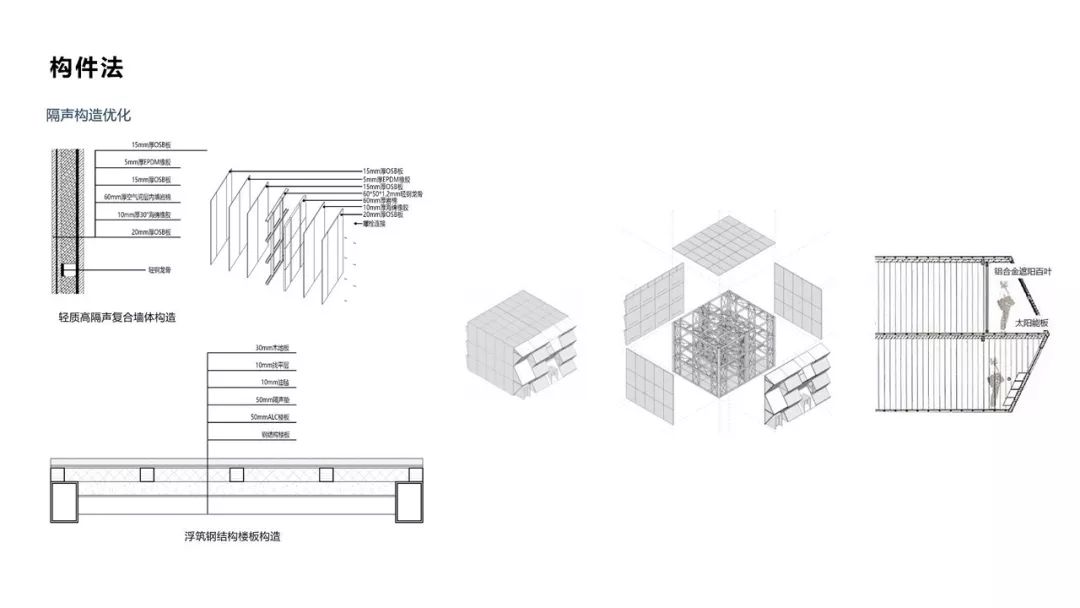

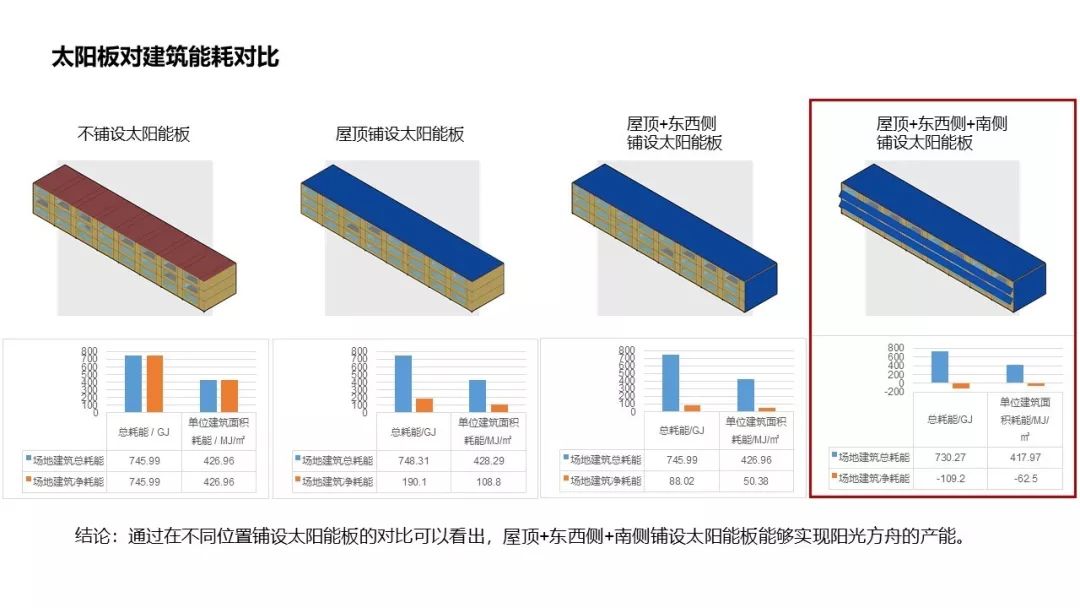

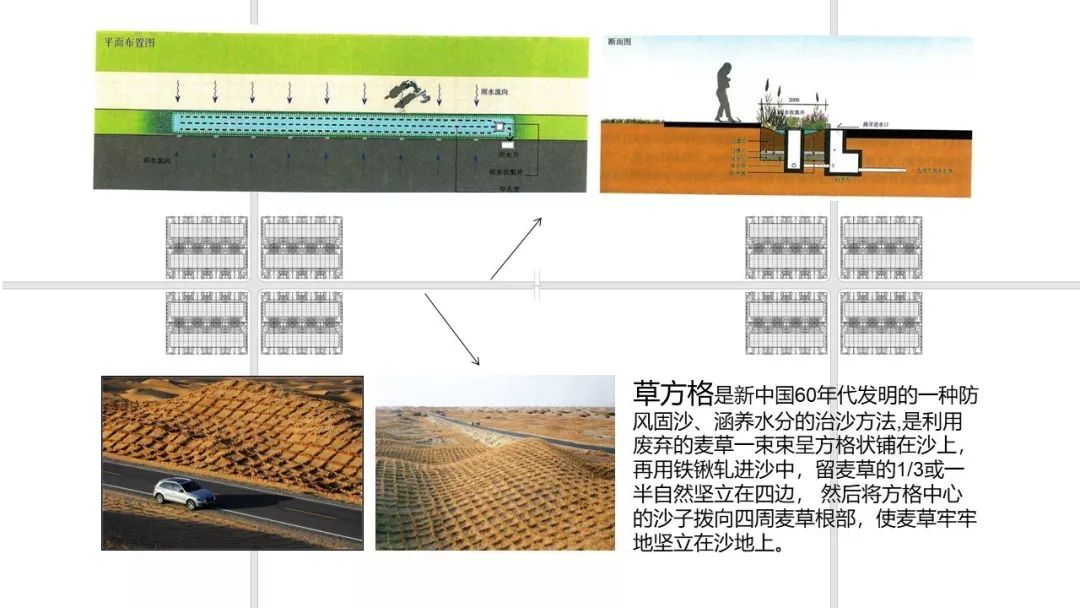

回应主题,治理沙漠 Responding to the theme of desert governance
https://v.qq.com/x/page/a3055nupton.html
Solar Ark 宣传视频
城市单户组
Urban Single-Family

背景与选题
南京传统住宅现代化
城市单户组的同学们选择了南京作为设计场地。南京属于夏热冬冷区,既要考虑夏季隔热又要考虑冬季保温,在节能技术设计上相对复杂,且日照强度在全国范围内属于中等水平,实现零能耗运行存在一些难度。虽然选址定在南京不利于实现竞赛的部分性能指标,但是探讨夏热冬冷区城市的可持续建筑设计具有一定的现实意义。
The students of the Urban Single Family group chose Nanjing as the design site. Nanjing belongs to the hot summer and cold winter zone, which needs to consider both heat insulation in summer and heat insulation in winter. The energy-saving technology design is relatively complex, and the sunshine intensity is in the middle level in the whole country, so it is difficult to realize zero energy consumption operation. Although the site selection in Nanjing is not conducive to the realization of some performance indicators of the competition, it is of practical significance to explore the sustainable architectural design of the hot summer and cold winter zone cities.

识别二维码查看详细内容 Identify QR code to see details
该团队希望本次设计在实现高性能建筑的同时,能够反映地域特色文化,所以选择在传统住宅的发展历史中寻找灵感和突破口。在民国期间,中西方文化密切的交流,对住宅形式产生了重大影响,西方别墅开始融入到中国人的生活中。传统的分散式、院落式建筑布局开始转向集中式的西方别墅布局,后者更有利于主动式建筑的节能,中国人的居住模式开始走向了现代化。在南京现存的民国住宅建筑中,以颐和路片区最具有代表性。在实地调研中,该团队同学发现在开元公寓区内有一处闲置的旧建筑。位于风貌保持区的部分住宅不属于文物保护范围,为了提升建筑的品质,团队最终选择了在原址上重新设计新建筑,同时考虑旧建筑构件的再利用。
The team hopes that this design can not only realize high-performance architecture, but also reflect regional characteristics and culture, so they choose to find inspiration and breakthrough in the development history of traditional residence. During the period of the Republic of China, the close cultural exchanges between China and the West had a significant impact on the form of housing, and Western villas began to integrate into Chinese life. The traditional layout of decentralized and courtyard buildings began to shift to the centralized layout of Western villas, the latter is more conducive to the energy conservation of active buildings, and the Chinese living mode began to move towards modernization. Among the existing residential buildings of the Republic of China in Nanjing, Yihe Road area is the most representative. In the field survey, the team found a vacant old building in Kaiyuan apartment area. Some of the houses located in the conservation area are not under the protection of cultural relics. In order to improve the quality of the building, the team finally chose to redesign the new building on the original site and consider the reuse of the old building components.

图中右下角为1930年代山西路(现为颐和路)住宅区, 薛冰先生提供
颐和路住宅区规划源于1929年的《首都计划》,由美国建筑师亨利·墨菲(Henry Killam Murphy,1877-1954)担任顾问。在该规划中,当时的设计师探索了西方别墅与中式居住生活的有机结合,其中的中西融合思想值得我们学习。取名“Light-Up”一方面意在传承优秀的建筑设计思想,将技术与文化融合,应用太阳能利用技术实现零能耗建筑,点亮可持续发展的意识与现代文明,体现国际影响力;另一方面是希望通过设计提升建筑与片区的品质,点亮文化传承。
The planning of Yihe Road residential area originated from the capital plan in 1929. And Henry killam Murphy (1877-1954), an American architect, acted as a consultant. In the planning, the designers at that time explored the organic combination of Western villas and Chinese living style, in which the idea of Chinese and Western integration is worth learning. Named "light up", on the one hand, it aims to inherit excellent architectural design ideas, integrate technology and culture, apply solar energy utilization technology to realize zero energy consumption building, light up the awareness of sustainable development and modern civilization, and reflect international influence; on the other hand, it hopes to improve the quality of buildings and areas and light up cultural heritage through design.
建筑设计
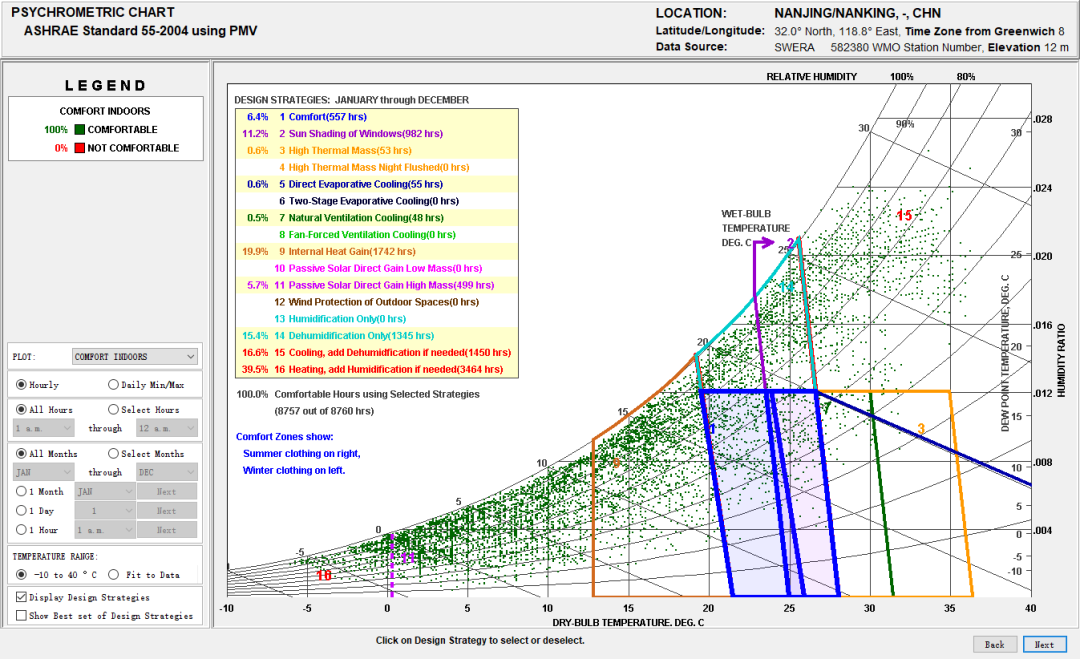
根据从EnergyPlus官网数据库中下载的南京市区气候数据,该团队同学对南京市的气候进行了分析,为减少采暖或制冷设备的使用,初步确定在建筑设计中采用的高效节能措施为:1)春秋季期间依靠室内人、电器产热达到舒适条件;2)夏季室内除湿;3)夏季遮阳设计;4)冬季被动式太阳能得热利用;5)夏季通风散热等。
According to the Nanjing urban climate data downloaded from the energy plus official website database, the team analyzed the climate of Nanjing. In order to reduce the use of heating or cooling equipment, the team preliminarily determined that the high-efficiency energy-saving measures adopted in the architectural design are: 1) relying on the indoor heat production of people and electrical appliances in spring and autumn; 2) indoor dehumidification in summer; 3) sunshade design in summer; 4) passive solar heat gain in winter 5) ventilation and heat dissipation in summer.
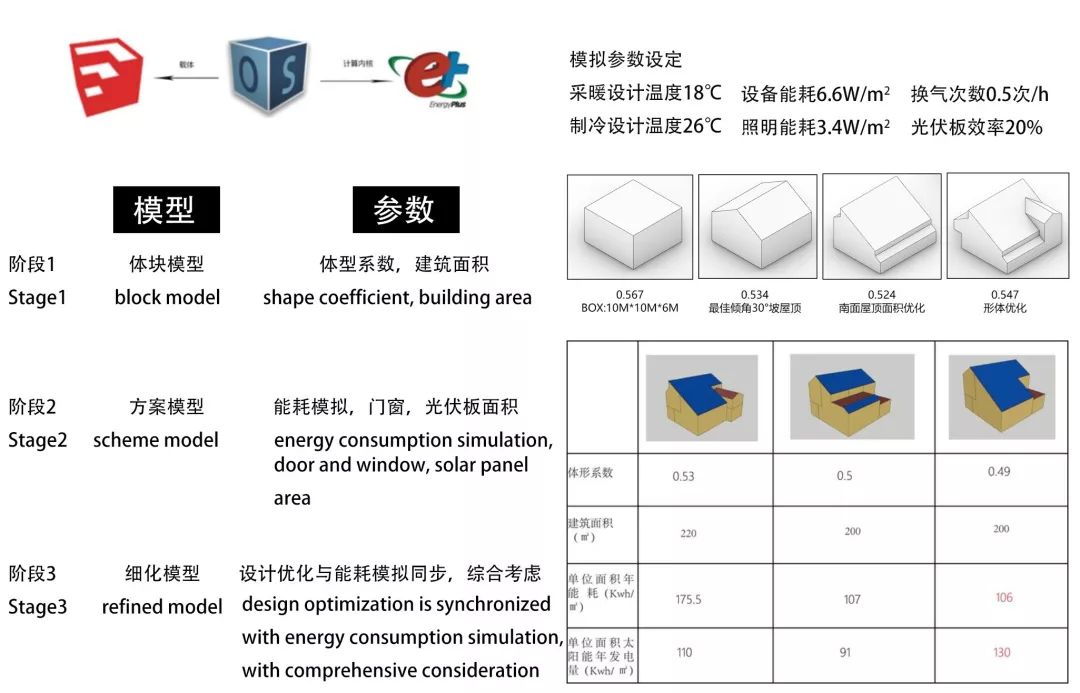
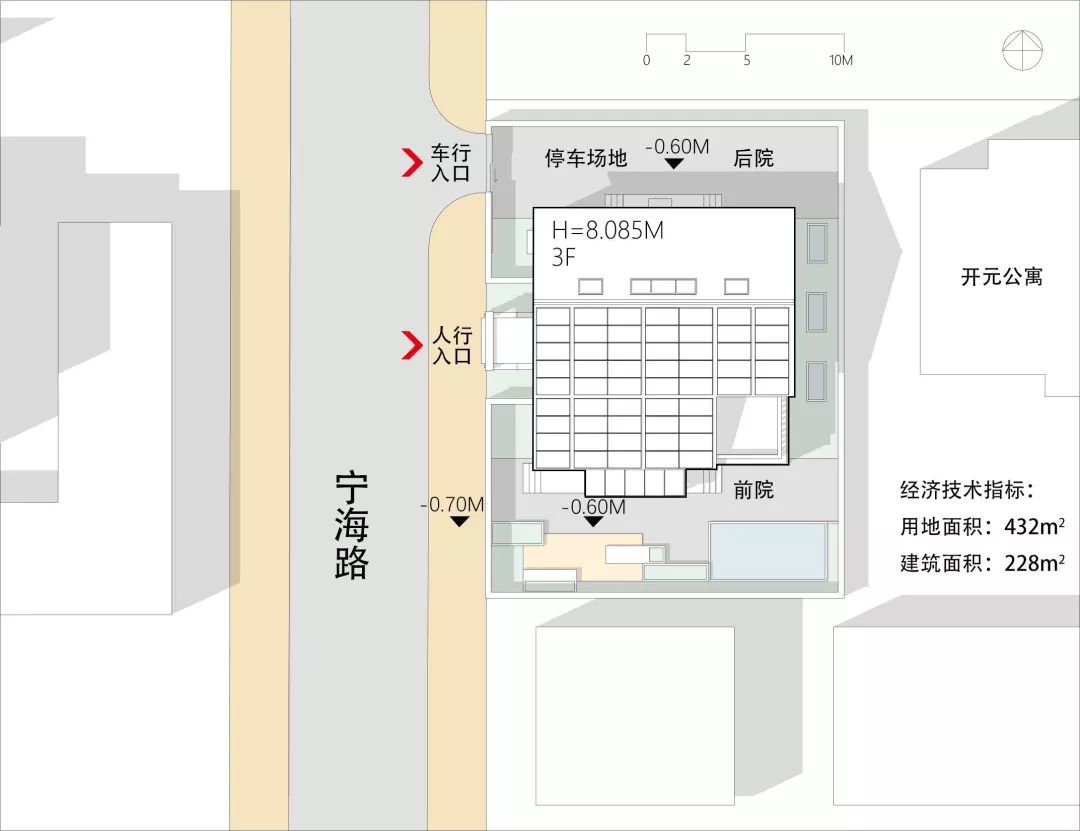
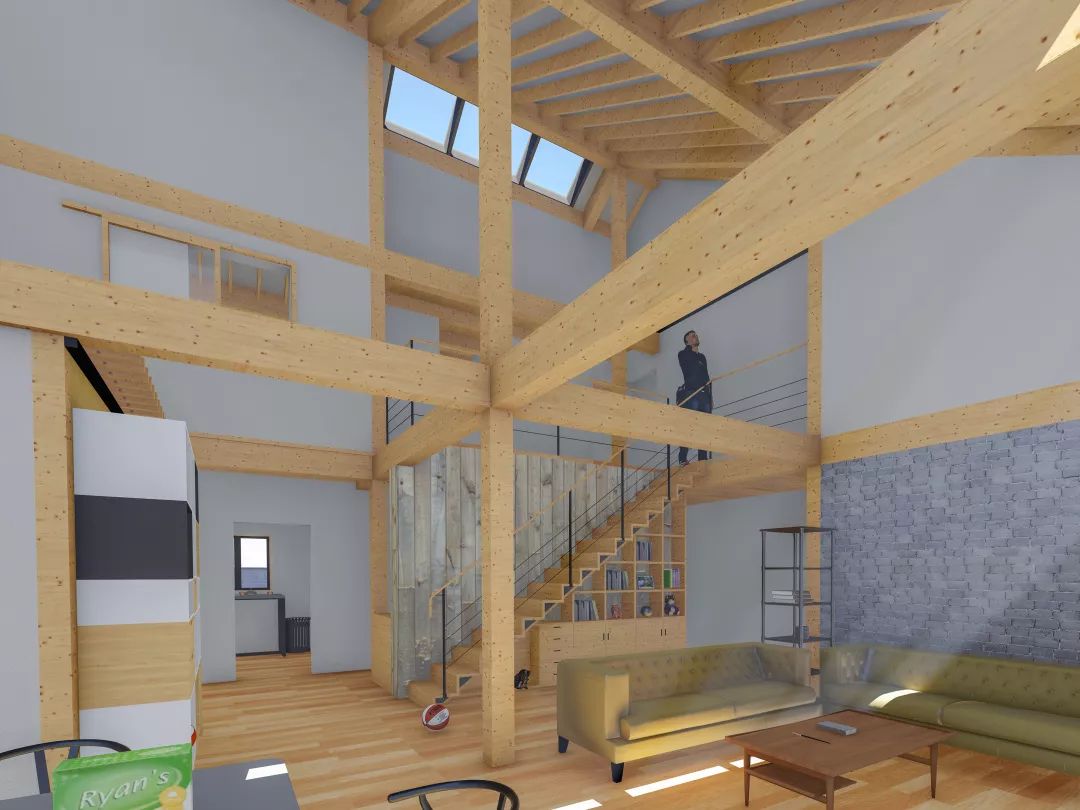
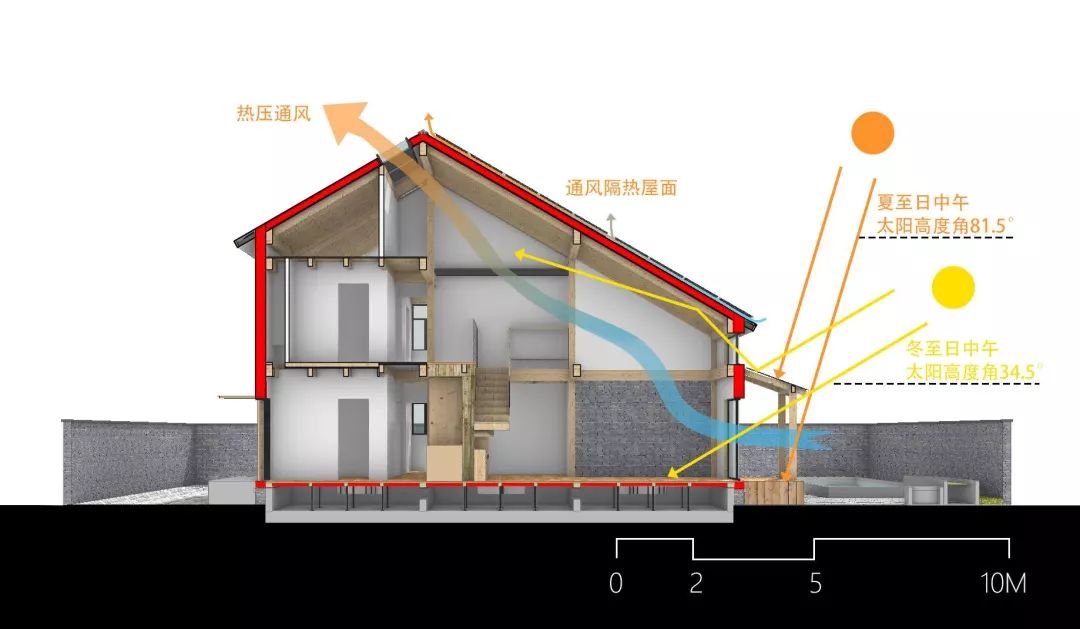

郊区单户组
Suburban Single-Family

背景与选题
定居和游居

识别二维码查看详细内容 Identify QR code to see details
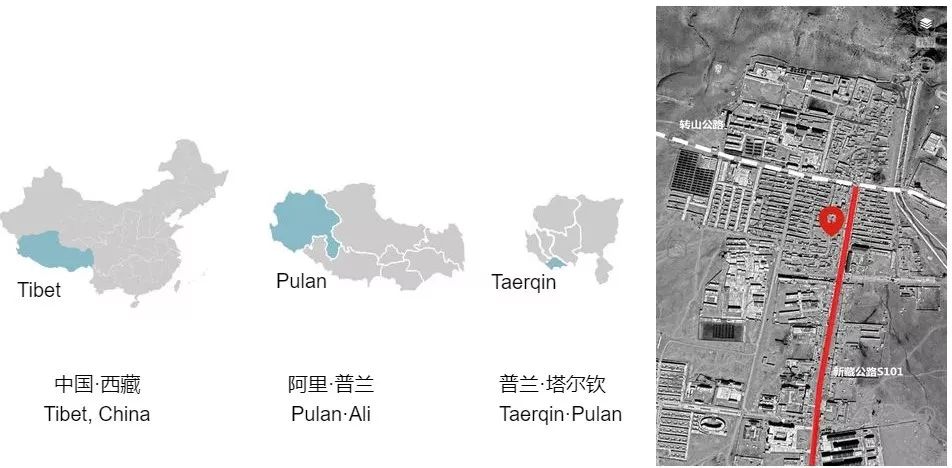
该组选址于西藏阿里普兰县的塔尔钦,海拔约4600~4700米,新藏公路219国道的分支贯穿其间。这里有最壮观的盘山公路,也有最壮阔的高原风光,但同时运输的困难也加大了建造的困难;受高寒气候条件及地理环境影响,这里的人们生活比较艰难,住房品质有待提高,但就是这样一群物质生活并不优渥的人们,却对自然有着最为虔诚敬畏的心——塔尔钦地处神山冈仁波齐脚下圣湖玛旁雍错北岸,是藏区宗教转山和转湖活动的起点,它是转山开始的地方,也是转山的终点。每年,无数的中国、印度、尼泊尔的信徒都会赶赴到这里转山修行。他们不畏艰难险阻严寒酷暑,数千里的路程,三步一磕,俯身下去,四肢伸直,头和鼻都触地,每一步,都是为心中的信仰而走。综上,西藏人民的生活可分为定居和游居两种模式---对应这两种模式郊区单户组的同学针对性地设计了固定居所(生活性)和移动居所(精神性)。
The suburban single-family house group is located in Tibet. There is the most spectacular Panshan Highway here, but at the same time, the difficulty of transportation also increases the difficulty of construction; affected by the high cold weather conditions and geographical environment, people here have a difficult life, but here People have the most pious respect for nature.The life of the Tibetan people can be divided into two modes of settlement and permanent residence --- fixed residence and mobile residence.

TASHI取自藏语“扎西德勒” ,虽然只有简单的一个词,但表达了藏族人民对世界和客人美好的祝愿与欢迎。这同时也表现了我们的房子对藏行者的欢迎以及对自然的感激和尊重。
Tashi comes from the Tibetan language "zhaxidler". Although there is only one simple word, it expresses the Tibetan people's best wishes and welcome to the world and the guests. At the same time, it also shows our house's welcome to Tibetans and its appreciation and respect for nature.
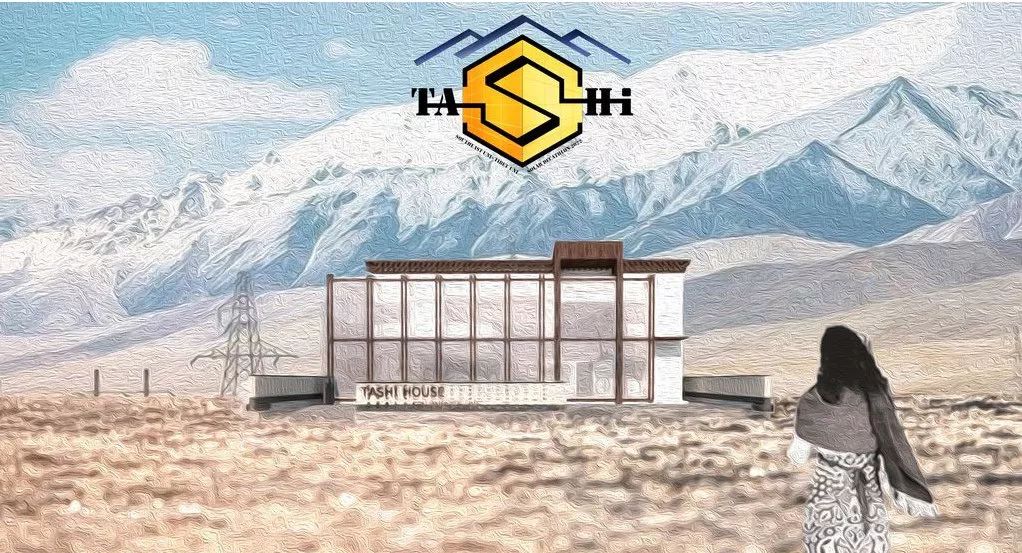
建筑设计
从气象分析指导设计
1.设计地点冬季北风风速大,温度低,故设计中减小北向窗墙比,减少冷风渗透;
2.设计地点过渡季主导风向为东南风,风速较大,风温较低,故设计中需增加东向南向开窗,强化过渡季自然通风;
3.设计地点全年温度低,故设计中的主要节能措施为增强围护结构保温性能、蓄热性能;增加建筑队太阳辐射的获取能力;增强建筑气密性等。
Guide design from meteorological analysis
1. The design site has high wind speed and low temperature in winter, so the window wall ratio in the north direction is reduced in the design to reduce the infiltration of cold wind;
2. The dominant wind direction of the design site in the transition season is southeast wind, with large wind speed and low wind temperature. Therefore, windows from east to South should be added in the design to strengthen the natural ventilation in the transition season;
3. The temperature of the design site is low throughout the year, so the main energy-saving measures in the design are to enhance the insulation performance and heat storage performance of the enclosure structure; increase the acquisition ability of the solar radiation of the construction team; enhance the air tightness of the building, etc.


模拟基本设定:
南向窗墙比0.5( DGJ540001-2016 要求大于0.45)
北向窗墙比0.2( DGJ540001-2016 要求小于0.2 )
采暖温度为15℃( 基于DGJ540001-2016 )
供冷温度设定为26℃,换气次数0.5次/h
设备能耗45W/㎡,照明能耗3W㎡
新风量30m³/(人×h)
Basic simulation settings:
South window wall ratio 0.5 (DGJ540001-2016 requires more than 0.45)
North window wall ratio 0.2 (DGJ540001-2016 requires less than 0.2)
Heating temperature is 15 ℃ (based on DGJ540001-2016)
The cooling temperature is set to 26 ℃, and the air change times are 0.5 times / h
Equipment energy consumption 45W / ㎡, lighting energy consumption 3W ㎡
Fresh air volume: 30m³/ (person × h)
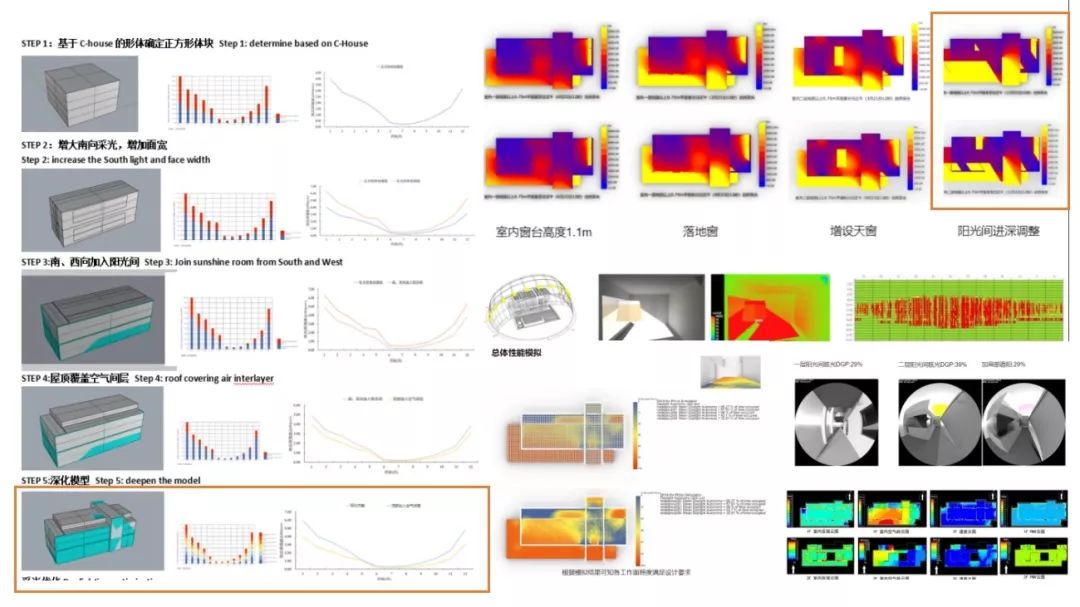
基于能耗的优化过程 Optimization process based on energy consumption
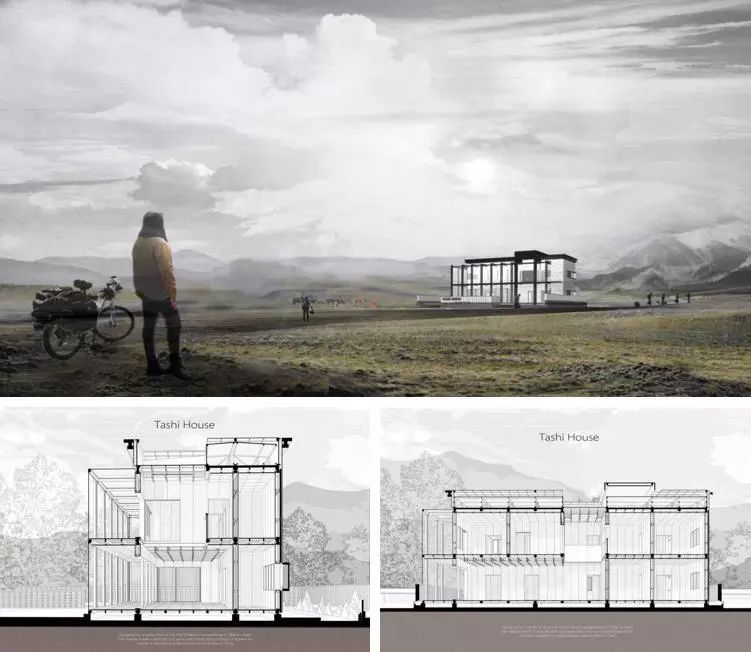
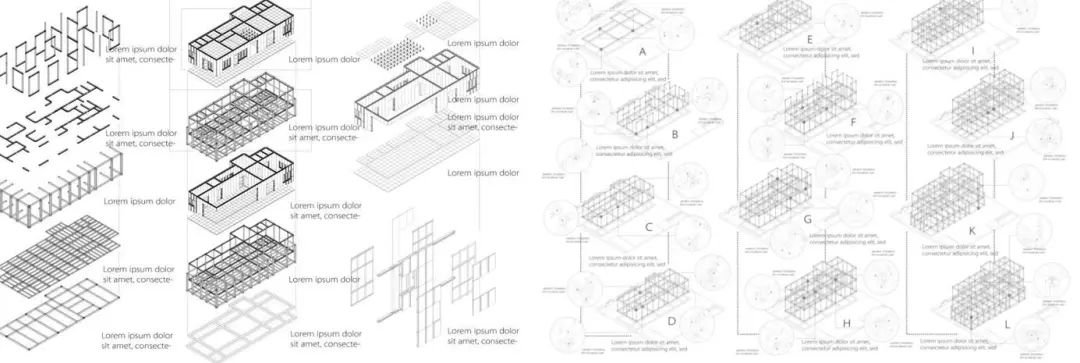
建筑构造 Building structure
工程建设无法摆脱自然环境的影响,西藏高海拔、高寒冷、高烈度地震及生态脆弱等“三高一脆”特点,使得工程建设受到恶劣自然环境的制约更为严重。我们针对西藏工程现状,设计选用分层装配框式结构体系,因地制宜,推动高原藏区建筑产业工业化、装配化、现代化进程, 争取早日实现西藏地区的跨越发展、快速建造。
The project construction cannot get rid of the influence of the natural environment. The "three highs and one embrittlement" characteristics of Tibet, such as high altitude, high cold, high intensity earthquake and fragile ecology, make the project construction more seriously restricted by the harsh natural environment. In view of the current situation of Tibet's projects, we have designed and selected a hierarchical assembly frame structure system, adapted measures to local conditions, and promoted the industrialization, assembly and modernization of the construction industry in the Tibetan Plateau, so as to achieve the leapfrog development and rapid construction in Tibet as soon as possible.

可移动式房屋部分 Movable housing
概念取自游牧民族的传统移动居所——蒙古包,可移动模块的外围护结构取自蒙古包的外围护构件哈那,它可被折叠收纳便于携带,可以满足朝圣者远行贺随时安营扎寨的需要。
The concept is taken from the traditional mobile residence of nomadic people - yurt, and the outer protective structure of the movable module is taken from the outer protective component Hana of yurt. It can be folded and stored for easy carrying, and can meet the needs of pilgrims to set up camp at any time.
高原装配式建筑通过BIM结构专用设计软件生成结构BIM信息化模型,确定每一根钢构件及墙板的尺寸、形状、开洞位置等;根据生成的BIM信息化模型,在预制构件工厂采用自动化设备生产出钢构件、墙板和其他部件,并在工厂完成管线洞口开设;在房屋施工现场按照每一个钢构件的编号进行现场快速安装,节点拼接均以螺栓连接形式完成,无需灌浆及焊接作业,实现数据化、快速化全流程信息作业。
For plateau assembly building, BIM information model of structure is generated by BIM special structural design software to determine the size, shape and opening position of each steel component and wall panel; according to the BIM information model, steel component, wall panel and other components are produced in prefabricated component factory by using automatic equipment, and pipeline opening is completed in the factory; at the house construction site, then The "Lego building block" operation mode is adopted, that is, on the site foundation, the site installation is carried out according to the number of each steel member, the site construction is carried out by the "dry" method, the joint splicing is completed in the form of bolt connection, without grouting and welding operation, and the roof lifting and water and electricity installation are finally completed.
Tashi House
https://v.qq.com/x/page/y30557a4x58.html
Tashi House 宣传视频
课程总结 COURSE SUMMARY
1 新型建筑学设计方法
1 Next Generation Architectural Design Method
经典建筑学 (Classical Architecture) 注重建筑人文、空间与形式的艺术性表现,新型建筑学(Next Generation Architecture)在经典建筑学的基础上,注重将性能、建造的技术性应用融合进建筑设计之中,进而促进设计方法与建筑工业化建造技术的结合。新型建筑学是对经典建筑学知识结构和知识内容的扩展和补充,在建筑作品创作研究和教学之外,扩展基础理论研究和基础科学研究等知识内容。2018年SDC东南大学和德国布伦瑞克工业大学联合赛队的参赛作品C-House是在新型建筑学基础上进行的建筑产品设计和建造实践。本次设计课程延续了基于定量分析的产品化建筑设计方法,设计过程中通过定量的模拟计算不断优化建筑设计,以性能优先为导向,同时注重建造和人文艺术。通过建立完整的建筑建造、建筑性能知识系统,并与建筑艺术知识系统相结合,培养新型建筑师的“跨学科”综合能力,对建筑师指导和解决设计与建造过程中的各类工程问题和艺术问题有促进作用,为建设行业培养新型建筑学人才,从而推动建筑产业现代化向前发展。
Classical architecture pays attention to the artistic expression of architectural humanity, space and form, and next generation architecture, based on classical architecture, pays attention to the integration of performance and construction technology into architectural design, so as to promote the combination of design methods and industrial construction technology. The next generation architecture is the extension and supplement of the knowledge structure and content of the classical architecture. In addition to the research and teaching of architectural works creation, it expands the knowledge content of basic theoretical research and basic scientific research. C-House, a competition of SDC Southeast University and Brunswick University of technology in 2018, is an architectural product design and construction practice based on next generation architecture. This design course continues the product based architectural design method based on quantitative analysis. In the design process, the architectural design is continuously optimized through quantitative simulation calculation, guided by performance priority, and focused on construction and humanities. Through the establishment of a complete knowledge system of building construction and building performance, combined with the knowledge system of building art, we can cultivate the "interdisciplinary" comprehensive ability of next generation architecture, which will promote the architects to guide and solve all kinds of engineering and art problems in the process of design and construction, train next generation architecture talents for the construction industry, so as to promote the modernization of the construction industry development.
2 新媒体技术的应用
2 Application of New Media Technology
本次设计采用了H5汇报的形式,实现了无图纸,无文件的云端文本汇报,只需一个账号便随时在任意一台电脑上汇报,也没有软件和图纸的桎梏,极大节约成本,提高效率,是一种未来媒体方式。
This design adopts the form of H5 report, realizing the cloud text report without drawings and documents. It only needs an account to report on any computer at any time, and there is no shackle of software and drawings, which greatly saves costs and improves efficiency. It is a future media way.
3 零能耗建筑研究
3 Research on Zero Energy Consumption Building
2020 SD太阳能十项全能设计竞赛是美国能源部面向全球的太阳能建筑界最高竞赛,是建筑,土木,能源,给排水,工程管理,造价,电力等多专业,设计方,供应商,施工方等多方向共同协同的复杂竞赛,这对于各方全面学习研究零能耗建筑有着巨大的意义。
2020 Solar Decathlon design competition is the highest competition of the US Department of energy for the global solar energy construction industry. It is a complex competition in which the construction, civil engineering, energy, water supply and drainage, engineering management, cost, electricity and other disciplines, designers, suppliers, constructors and other aspects work together. Moreover, this is of great significance for all parties to study and research the zero-energy building comprehensively.
学习感想 THOUGHTS
东南大学2020 SD太阳能十项全能设计竞赛感想:

设计课过程照片 Process photo of design course
指导教师简介

张宏
东南大学建筑学院教授,博士生导师,建筑技术与科学研究所所长、东南大学工业化住宅与建筑工业研究所所长,东南大学BIM技术研究所所长
主要研究方向:建筑设计与建造,建筑工业化理论与实践,建筑信息模型(BIM)技术研发与应用,住居学与住宅设计研发等

周欣
东南大学建筑学院副教授,研究生导师,建筑技术与科学研究所副所长
主要研究方向:建筑性能模拟,建筑节能技术适宜性分析建筑用能需求特性分析,人员用能行为模拟等

孔哲
东南大学建筑学院讲师
主要研究方向:建筑光环境、高动态图片技术及应用等

王伟
东南大学建筑学院副教授
主要研究方向:室内定位技术,智能建筑,城市建筑数字化系统与节能策略等
![]()
助教 Assistant:
罗申、陈雨蒙
参与学生 Students:
王朝红,孙学林,周超,曲恺辰,金宇航,任佳雯,Mayank Singk,王明琦,田帅,朱郁松,石紫宸,Buyan May
特邀评委 Invited Judges:
甘昊,东南大学建筑学院特聘研究员、木土工作室Atelier MUTO创始人
刘庆俊,南京思丹鼎建筑科技有限公司董事长,2018SDC竞赛C-House施工图负责人
魏剑,东南大学建筑设计研究院有限公司建筑师,建筑工业化院总工、高级工程师
徐伟炜,东南大学土木工程学院教授,西藏大学援藏教师
文字:金宇航,王朝红,王明琦
供稿单位:建筑技术与科学研究所


